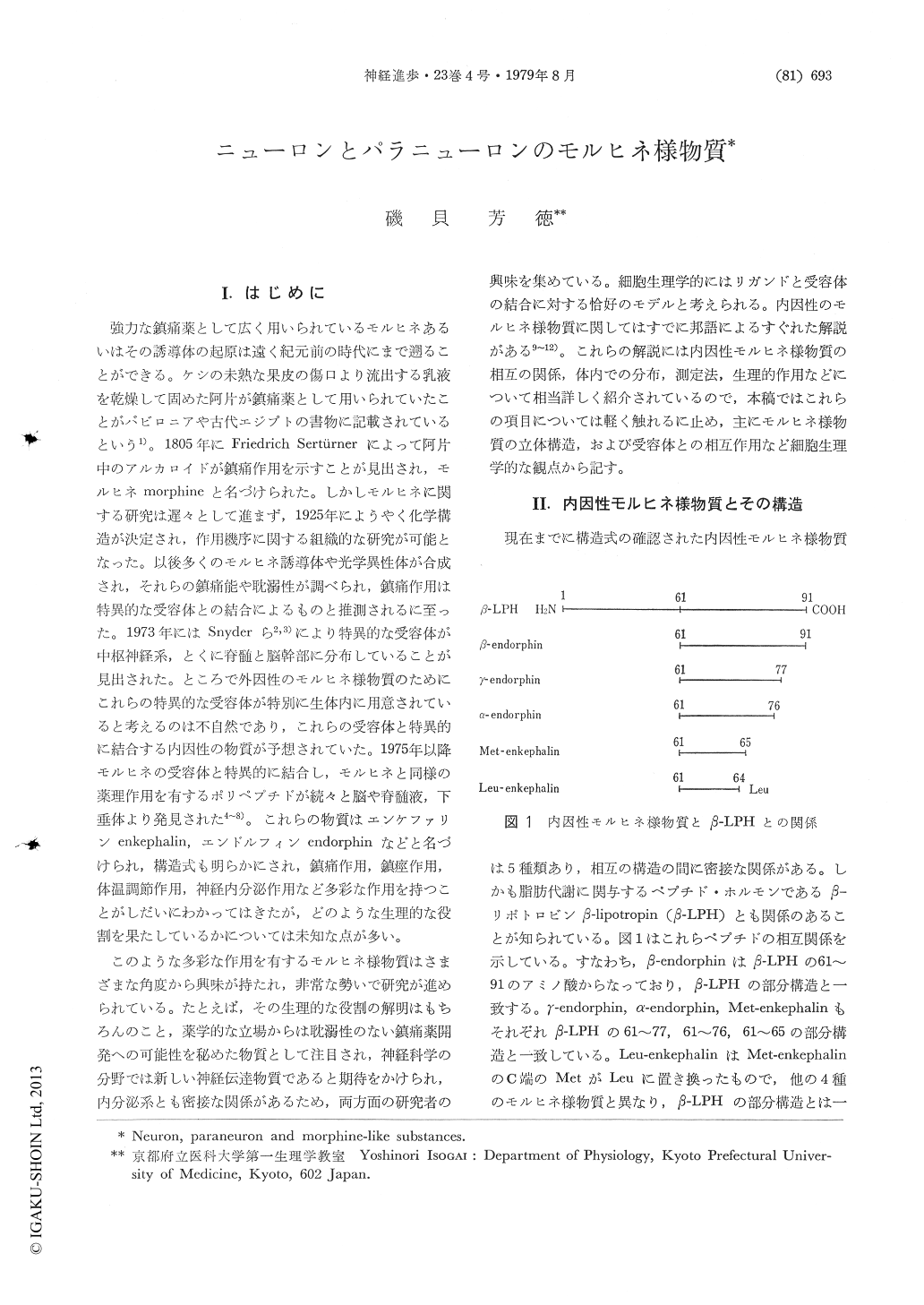Japanese
English
- 有料閲覧
- Abstract 文献概要
- 1ページ目 Look Inside
I.はじめに
強力な鎮痛薬として広く用いられているモルヒネあるいはその誘導体の起原は遠く紀元前の時代にまで遡ることができる。ケシの未熟な果皮の傷口より流出する乳液を乾燥して固めた阿片が鎮痛薬として用いられていたことがバビロニアや古代エジプトの書物に記載されているという1)。1805年にFriedrich Sertürnerによって阿片中のアルカロイドが鎮痛作用を示すことが見出され,モルヒネmorphineと名づけられた。しかしモルヒネに関する研究は遅々として進まず,1925年にようやく化学構造が決定され,作用機序に関する組織的な研究が可能となった。以後多くのモルヒネ誘導体や光学異性体が合成され,それらの鎮痛能や耽溺性が調べられ,鎮痛作用は特異的な受容体との結合によるものと推測されるに至った。1973年にはSnyderら2,3)により特異的な受容体が中枢神経系,とくに脊髄と脳幹部に分布していることが見出された。ところで外因性のモルヒネ様物質のためにこれらの特異的な受容体が特別に生体内に用意されていると考えるのは不自然であり,これらの受容体と特異的に結合する内因性の物質が予想されていた。1975年以降モルヒネの受容体と特異的に結合し,モルヒネと同様の薬理作用を有するポリペプチドが続々と脳や脊髄液,下垂体より発見された4〜8)。
Abstract
Comparing with the very long history of mor-phine, the endogenous morphine-like substances (opiates) have only five years history at the most. However, the progress of the studies on these substances is quite rapid and extreme. The studies on the physiological activities and the distribution of the endogenous opiates are reviewed briefly, and the studies on the structures and functions of opiates and their specific receptor are brought into focus.
Five endogenous opiates have been found in the brains and cerebrospinal fluid of many kinds of mammalia.

Copyright © 1979, Igaku-Shoin Ltd. All rights reserved.


